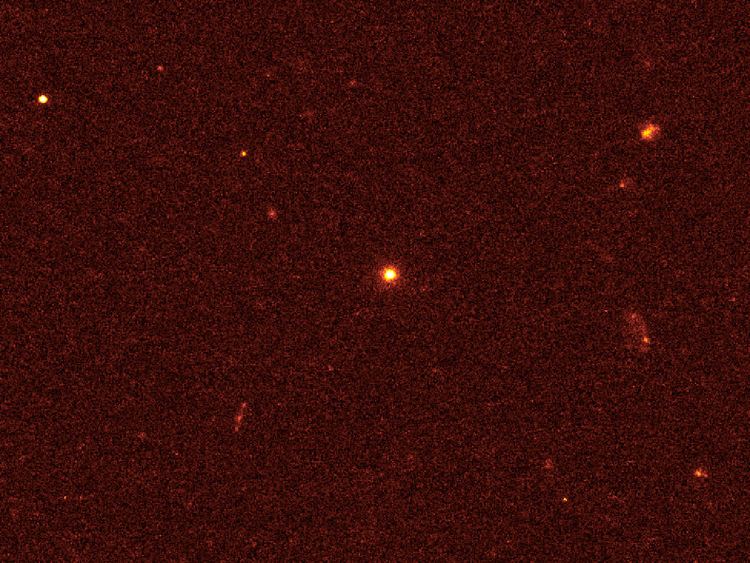Event type Gamma-ray burst Duration months, perhaps a year | Date 28 March 2011 Constellation Draco | |
 | ||
Other designations GRB 110328A, Swift J164449.3+573451, Sw 1644+57 Instrument Swift Gamma-Ray Burst Mission | ||
Swift J1644+57 (also indicated as GRB 110328A when it was discovered) is the name of the event that was observed on March 28, 2011, the tidal disruption of a star by a supermassive black hole. It has been detected by the Swift Gamma-Ray Burst Mission on March 28, 2011. It occurred in the center of a small galaxy in the Draco constellation, about 3.8 billion light-years away.
Studied by dozens of telescopes, it is one of the most puzzling cosmic blasts of high-energy radiation ever observed when it comes to brightness, variability and durability. It probably occurred when a star wandered too close to the central black hole in the galaxy, and was gravitationally torn apart and swallowed by it. Timing considerations suggest that the tidally disrupted star was a white dwarf and not a regular main sequence star.
Debris now encircles the black hole in an accretion disk, which launches bipolar jets at near the speed of light. Jet plasma emits the γ- and X-rays. The beam of radiation from one of these jets points directly toward Earth, enhancing the apparent brightness. Repetitive dimming and softening of the X-rays implies that the jet temporarily tilts away from us, due to precession of the warped disk.
The jets drive shocks into the surrounding interstellar medium, resulting in a radio to infrared afterglow. Detection of the relativistically expanding afterglow confirmed the identity of the host galaxy. Observed linear polarization of the infrared radiation is consistent with synchrotron emission from the afterglow shock.
"This is truly different from any explosive event we have seen before," said Joshua Bloom of the University of California at Berkeley, the lead author of the study published in the June 2011 issue of Science.
